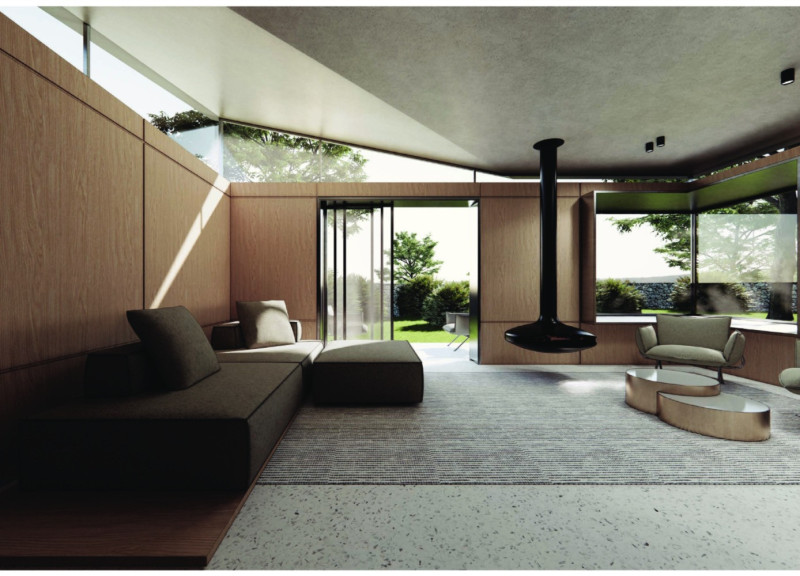5 key facts about this project
Tili Vini is located in the Italian countryside and combines contemporary design with the area’s historical context. The project seeks to change how visitors perceive their surroundings by using vertical perspectives. It achieves a thoughtful balance of addition and subtraction, which emphasizes the passage of time and creates a closer connection between people and the landscape.
Conceptual Framework
The design starts a conversation between new and old structures by manipulating the land. Private spaces are submerged, and parts of the terrain are cut away, encouraging engagement with the rich history of the site. The ground plane in front of the existing barn is lifted at the edges, allowing new villas to sit beneath it. This arrangement promotes a continuous interaction with the landscape, drawing occupants into the natural beauty surrounding them.
Structural Engagement
The existing barn is central to the design. Its internal structure is exposed, creating a visual link with the environment. This openness highlights the barn’s historical importance. A new building is placed at the lower level of the barn, creating a relationship between the old and the new. This connection is enhanced by two arches above the second floor, framing views of the landscape and linking visitors to the larger site.
Material Considerations
Selecting materials plays an important role in the design. Laminated wood and glass contribute to a modern feel. Cork stands out for its sustainable qualities and its connection to traditional practices. This material resonates with local heritage and offers a contemporary touch. The processing time of cork also relates to winemaking traditions in the region, adding another layer of meaning to the project’s design.
Spatial Configuration
The arrangement of the villas is designed to promote interaction with the landscape and the existing structures. This layout encourages exploration and provides comfort for those who occupy the space. The raised ground plane allows for vantage points that invite people to observe and engage with the surroundings.
The design concludes with a compelling expression where the interplay of forms and materials creates a strong sense of place and time, inviting reflection while remaining firmly tied to its historical background.






















































